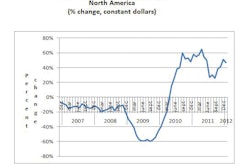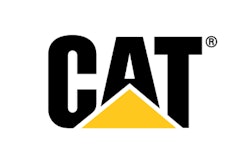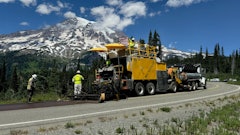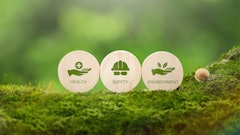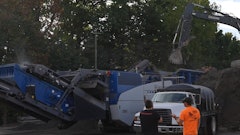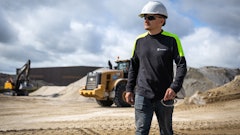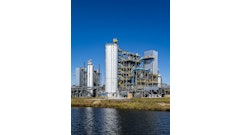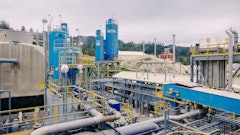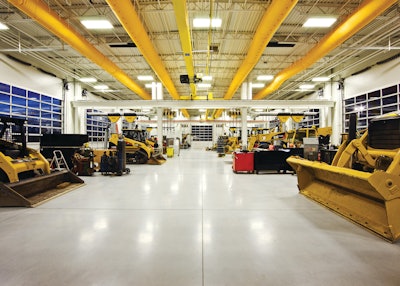
Cat dealers realize that sustainable facilities and methods save money, reduce environmental impact, improve employee satisfaction and impact customers in the same positive manner. As independently owned businesses, Cat dealers choose specific construction details and make the capital investments decisions for their facilities. However, when requested, Caterpillar Dealer Facility Planning will provide a Cat dealer with recommendations for their facility plans.
Caterpillar Dealer Facility Planning consultants have been consulting with Cat dealers for more than 60 years and have received certification in Leadership in Energy and Environmental Design (LEED) and Green Associate. Facility consultations include information and recommendations regarding sustainable construction methods. This provides an excellent opportunity to enter into collaborative discussions with Cat dealers to heighten the passion and commitment for sustainability.
A single process or a comprehensive plan – it all counts
Cat dealers realize that sustainability and sustainable facility construction are important. Employing sustainable construction techniques have economic and environmental benefits. Another benefit is that customers view both Caterpillar and Cat dealers as leaders and participants in the sustainability evolution. It is becoming the construction standard.
As Cat dealers plan to develop new facilities, expand or re-arrange their existing facilities, they are including sustainable ideas and finding the entire building construction industry, from architects to contractors to suppliers, are evolving to sustainable methodology. It is becoming increasingly easier to construct sustainably.
There are many levels of sustainable design and construction, from validated certification of almost every construction process to improving a single process that impacts sustainability.
Here are a few examples of sustainable facility or operational aspects used today by Cat dealers.
- Cat dealers perform equipment cleaning at their facilities. The ability to recycle and reuse wash water minimizes the use of clean “new” water, removes sediments and contaminants and reduces the amount of waste water sent to municipalities or into the environment. Many dealers follow this process today and Caterpillar Dealer Facility Planning provides basic drawings and recommendations for a mud-settling pit. More sophisticated, second-stage recycling equipment is also used. One dealer reduces sediments to small, compressed, dried cakes. Others have sophisticated recycling systems, including water storage tanks or landscaped retention ponds, which also serve as miniature eco-systems for plants and wildlife.
- Harvesting rainwater from rooftops or paved areas is particularly important in certain regions. Potable water can be both an expensive and sometimes scarce commodity. Non-potable water is used in many applications both inside and outside buildings which can reduce the need for potable water and the demand on municipal utilities. Dealers also utilize both above- and below-ground water storage.
- Many dealers are taking a closer look at facility energy consumption and ways to reduce direct utility costs and carbon emissions. The resulting economic benefits are relatively easy to determine and many dealers have reduced their facility energy consumption via sustainable means. Dealers have utilized a number of methods to reduce energy consumption, such as using sensors to shut off lights or ventilation when they are not required, use of energy efficient lights and appliances, natural lighting, location/positioning of buildings, insulation, roofing materials, coatings and colors, glazing, geothermal systems and solar panels to name a few.
- Dealers often recycle or reuse oil. Filtration carts are used to filter oil to meet cleanliness specifications provided by Caterpillar. The result is a clean and efficient lubricant that maximizes component life, permits reuse and reduces waste oil. For oil that is not suitable for filtering and reuse, dealers employ clean-burning, high-efficiency heaters or boilers for facility heating. Both sustainable processes reduce the amount of new oil and heating fuel required, as well as limit the transportation, handling and disposal required.
- Several dealers have adopted policies or vision statements that support and embrace sustainability within their organization to drive and encourage sustainable behavior and actions. This helps to embed sustainable values within the organization, and helps earn respect and admiration from customers, employees and the community.
- Many dealers strive to embrace facility layouts that maximize efficiencies, capabilities and capacities. Effective layouts can ensure resources are not duplicated. Proper flow minimizes movements and backtracking and maximizes productivity, which minimizes waste and all the associated extra energy consumed. And, the reduction of waste is very compatible with lean manufacturing principles.
In summary, the worldwide interest and demand to become more sustainable and responsible is resulting in rapidly changing building construction methodologies. Awareness is increasing and helpful resources are now more readily available. Cat dealers are much more aware of sustainable building methods and practices and most are engaged at some level in sustainable activities and businesses. By sharing experiences and ideas, Caterpillar and Cat dealers can leverage successes and jointly improve sustainability.





